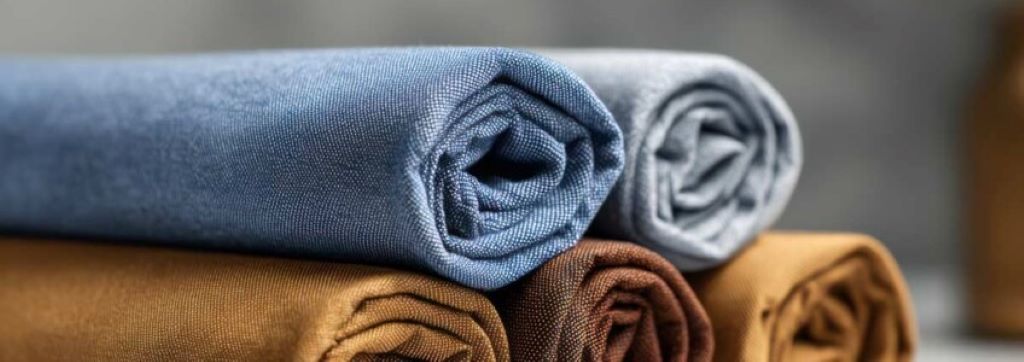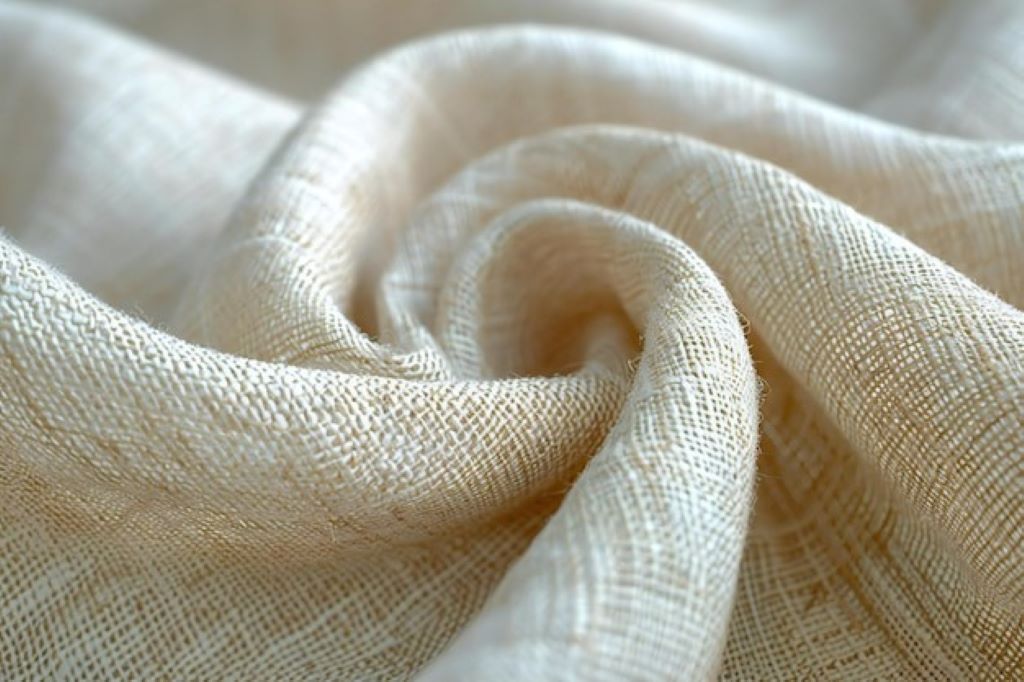Picture this: you’ve just purchased a beautiful linen dress for your summer vacation, but you’re worried it might lose its shape after a few wears. Or perhaps you’re eyeing those comfortable linen pants but wondering if they’ll stretch out and become baggy over time. If you’ve ever asked yourself “does linen stretch?” – you’re not alone. This natural fabric question puzzles many shoppers who want to make informed clothing choices.
The short answer is nuanced: pure linen has minimal stretch properties, but understanding the complete picture will help you care for and choose linen garments wisely. Let’s dive deep into everything you need to know about linen’s stretching characteristics, so you can confidently add this timeless fabric to your wardrobe.
Understanding Linen Fabric Composition
Linen is a natural textile made from flax plant fibers, renowned for its breathability, durability, and classic appearance. Unlike synthetic materials or even cotton blends, pure linen possesses unique structural properties that directly impact its stretch potential.
The flax fibers used to create linen are naturally stiff and strong, with minimal elasticity built into their molecular structure. This inherent characteristic means that 100% pure linen fabric will have very limited stretch – typically no more than 3-5% in any direction. This minimal give is what contributes to linen’s crisp, structured appearance and its ability to maintain shape over time.
However, modern textile manufacturing has introduced linen blends that can alter these stretching properties significantly. When linen is combined with elastane, spandex, or other stretchy fibers, the resulting fabric can have considerably more give while maintaining many of linen’s desirable qualities.
How Much Does Pure Linen Stretch?
When examining pure linen’s stretch characteristics, it’s important to understand the different types of stretch that fabrics can exhibit:
Mechanical Stretch: This refers to the temporary elongation that occurs when fabric is pulled. Pure linen exhibits minimal mechanical stretch, typically ranging from 2-5% before returning to its original shape. This slight give allows for comfortable movement without compromising the garment’s structure.
Recovery Stretch: This measures how well a fabric returns to its original dimensions after being stretched. Pure linen has excellent recovery properties, meaning it won’t permanently deform under normal wear conditions. This is why quality linen garments maintain their shape season after season.
Bias Stretch: All woven fabrics, including linen, have more give when pulled diagonally (on the bias) compared to pulling along the grain. This natural characteristic allows linen garments to accommodate body movement while maintaining their overall silhouette.
The thickness and weave of linen also influence its stretch properties. Lightweight, loosely woven linen will have slightly more give than heavy, tightly woven varieties. Similarly, the finishing treatments applied during manufacturing can affect the final stretch characteristics.
Factors That Affect Linen Stretching
Several elements influence how much linen will stretch and how it behaves over time:
Fiber Content and Blends
The most significant factor affecting linen stretch is the addition of other fibers. Common linen blends include:
- Linen-Cotton Blends: These typically offer slightly more stretch than pure linen while maintaining breathability
- Linen-Elastane Blends: Adding even 2-5% elastane dramatically increases stretch and recovery properties
- Linen-Rayon Blends: These combinations often provide moderate stretch with enhanced drape
Weave Structure
The way linen fibers are woven together impacts stretch characteristics:
- Plain weave: The most common linen weave with minimal stretch
- Twill weave: Offers slightly more give due to the diagonal fiber pattern
- Loose weave: Provides more stretch but may be less durable
Fabric Weight and Density
Heavier linen fabrics typically stretch less than lightweight varieties. The density of the weave also plays a role – tightly woven linen will have less give than loosely constructed fabric.
Moisture and Temperature
Linen fibers can become more pliable when exposed to humidity and heat. This is why linen garments may seem to have more give in warm, humid conditions and why proper care during washing and drying is crucial.

Caring for Linen to Minimize Unwanted Stretching
Proper care is essential to maintain linen’s shape and prevent unwanted stretching or shrinkage:
Washing Guidelines
- Use cold or lukewarm water to prevent fiber damage
- Choose gentle or delicate wash cycles to minimize agitation
- Avoid overloading the washing machine to prevent excessive stretching
- Use mild detergents specifically designed for natural fibers
Drying Best Practices
- Air dry linen garments when possible to prevent heat-related stretching
- If using a dryer, use low heat settings and remove items while slightly damp
- Hang or lay flat to dry, avoiding clips or hangers that might cause localized stretching
- Reshape garments while damp to maintain proper dimensions
Storage and Handling
- Store linen items properly folded or hung to prevent creasing and stretching
- Avoid overstuffing closets, which can lead to compression and shape distortion
- Handle wet linen gently, as fibers are more vulnerable when saturated
Linen vs Other Fabrics: Stretch Comparison
Understanding how linen compares to other popular fabrics helps put its stretch properties in perspective:
Cotton: Similar to linen, pure cotton has minimal stretch, though cotton-elastane blends are common and offer more give.
Silk: Natural silk has slightly more stretch than linen due to its protein-based fiber structure.
Wool: Offers natural elasticity that exceeds linen, with good recovery properties.
Synthetic fabrics: Materials like polyester and nylon often incorporate stretch fibers and can offer significantly more elasticity than natural linen.
Knit vs. Woven: Knit linen fabrics will always have more stretch than woven linen due to the construction method, even with identical fiber content.
When Linen Stretch Becomes a Problem
While linen’s minimal stretch is generally an asset, certain situations can lead to unwanted stretching or shape distortion:
Improper Sizing
Buying linen garments too small hoping they’ll stretch to fit is a common mistake. Since pure linen doesn’t have significant stretch, proper initial fit is crucial for comfort and appearance.
Wear Patterns
Areas of frequent stress, such as elbows, knees, or seats, may experience localized stretching over time, especially in lower-quality linen garments.
Care Mistakes
Incorrect washing, drying, or storage can lead to permanent shape changes. Hot water, high heat drying, and improper handling while wet are common culprits.
Choosing the Right Linen for Your Needs
When shopping for linen items, consider these factors to ensure you get the stretch characteristics you want:
Check the Fabric Label
Always read the fiber content label. Look for percentages of elastane or spandex if you want more stretch, or choose 100% linen if you prefer minimal give.
Consider the Garment Type
Different clothing items benefit from different stretch properties. Fitted clothing may benefit from linen blends with stretch, while structured pieces like blazers often look better in pure linen.
Think About Intended Use
Casual wear might benefit from the comfort of stretch-enhanced linen blends, while formal wear often looks best in traditional pure linen with its crisp structure.
The Benefits of Linen’s Limited Stretch
Rather than viewing linen’s minimal stretch as a limitation, consider these advantages:
Shape Retention: Garments maintain their intended silhouette wear after wear
Durability: Less stretch often correlates with longer-lasting garments
Professional Appearance: The structured nature of linen creates polished, sophisticated looks
Versatility: Linen’s stable properties make it suitable for various garment types and occasions
Making Linen Work for Your Lifestyle
To successfully incorporate linen into your wardrobe despite its limited stretch:
- Choose proper sizes based on actual measurements rather than hoping for stretch
- Invest in quality pieces that will maintain their shape over time
- Learn proper care techniques to preserve the fabric’s integrity
- Consider linen blends for activewear or fitted garments where more stretch is beneficial
- Appreciate linen’s unique qualities rather than expecting it to behave like stretch fabrics
Related Topics:
Knitting Magic Loop Technique – Everything You Need to Know
Exploring the Key Principles of Data Ethics for Responsible Data Use

